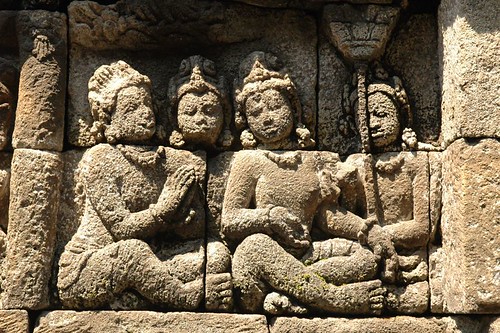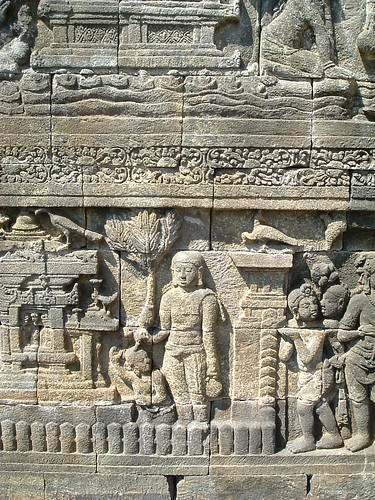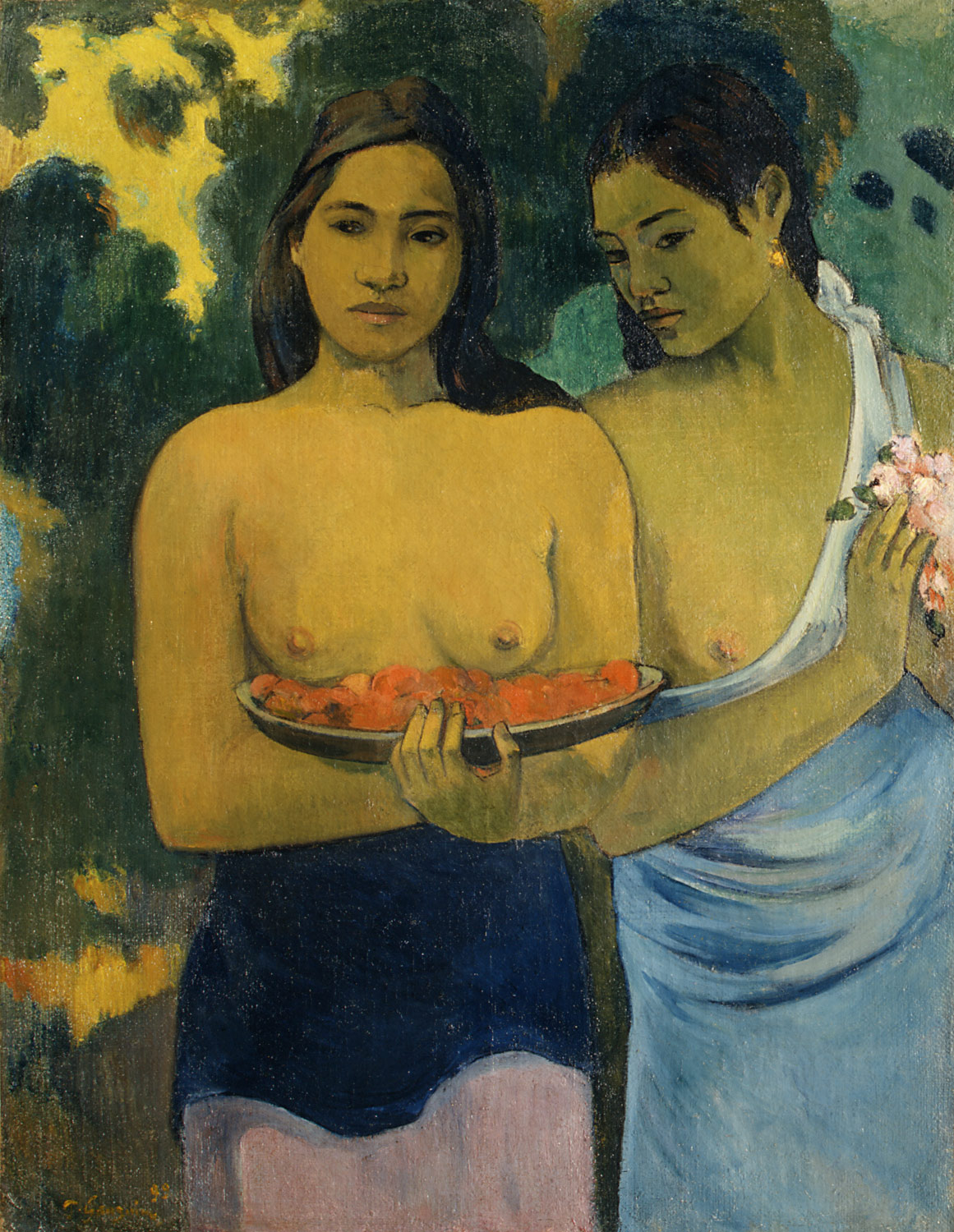What we expect from art. "Be mysterious"
When you step outside from a visit to the Uffizi, you discover you have learned to see. Your vision is clearer and deeper.
Oddly, the two-dimensional paintings you have been viewing have the effect of rendering faces more rounded, more three dimensional.
So this first order effect is a simple one of spatial clarity, a brightening of the vision. I dont know why the rocks in the landscapes of Renaissance art dont educate. There was little knowledge of geology in the fifteenth century, but there was also little knowledge of
biology. Still the faces convince, while the rocks do not. Each face you see on the street now appears to be that of a model on the way to some studio.
The higher order of vision that we expect to educate relates to the human dimensions. Travelling to ancient jungle sites, we see murals which fascinate and appall. In Tikal, in Central America we see laterite reliefs and rare murals where aristocrats run strings of thorns through the tongue or through the penis, in order to produce blood. To placate the gods, we are told. But the motives are truly alien. Stone reliefs are far from the mobile panels and rollable canvases that the merely wealthy purchase today. From Tikal we venture to Angkor Wat, the only other civilization to flourish in tropical jungle. Here too stretch hundreds of metres of stone reliefs. Expecting Buddhism to produce tranquil scenes, we are shocked to find the major theme to be battles, with legendary serpents churning oceans of milk for millennia.




_________________________________________________
The truly pacific Buddhist reliefs in Borobudur in Java amaze without horror. (I expect I have forgotten battle scenes there, I visited before the restorations were complete). Paul Gauguin saw plaster casts of some of Borobudur, and possessed some postcards. I guessed this influence when I saw the thick ankles and wrists in the reliefs, which make much more sense in stone than they do in Gauguins oils.

The hands of the woman on the right are said to echo a Borobudur panel.
_________________________________________________
P G also had photographs of Egyptian murals, their upright , pre-modern passivity appears in his paintings.

"PG transferred in Sydney to a ship bound for Auckland, where he had to wait three weeks for the Richmond that maintained a regular service between New Zealand, Samoa, Rarotonga and Tahiti. He spent most of his waiting period complaining about the bad weather, the poor food and the lack of distractions, but, more positively, also carefully studied the fine maori collections in the old Auckland Museum, at the top of Shortland street"
Evidently part of what we expect from art is to learn about prior art. The chief benefit, however is to learn how to see. To see deeper, finer and more brightly.
"The Impressionists look for what is near the eye, and not at the mysterious centers of thought."
Gauguin



 spinning boxes
spinning boxes





<< Home